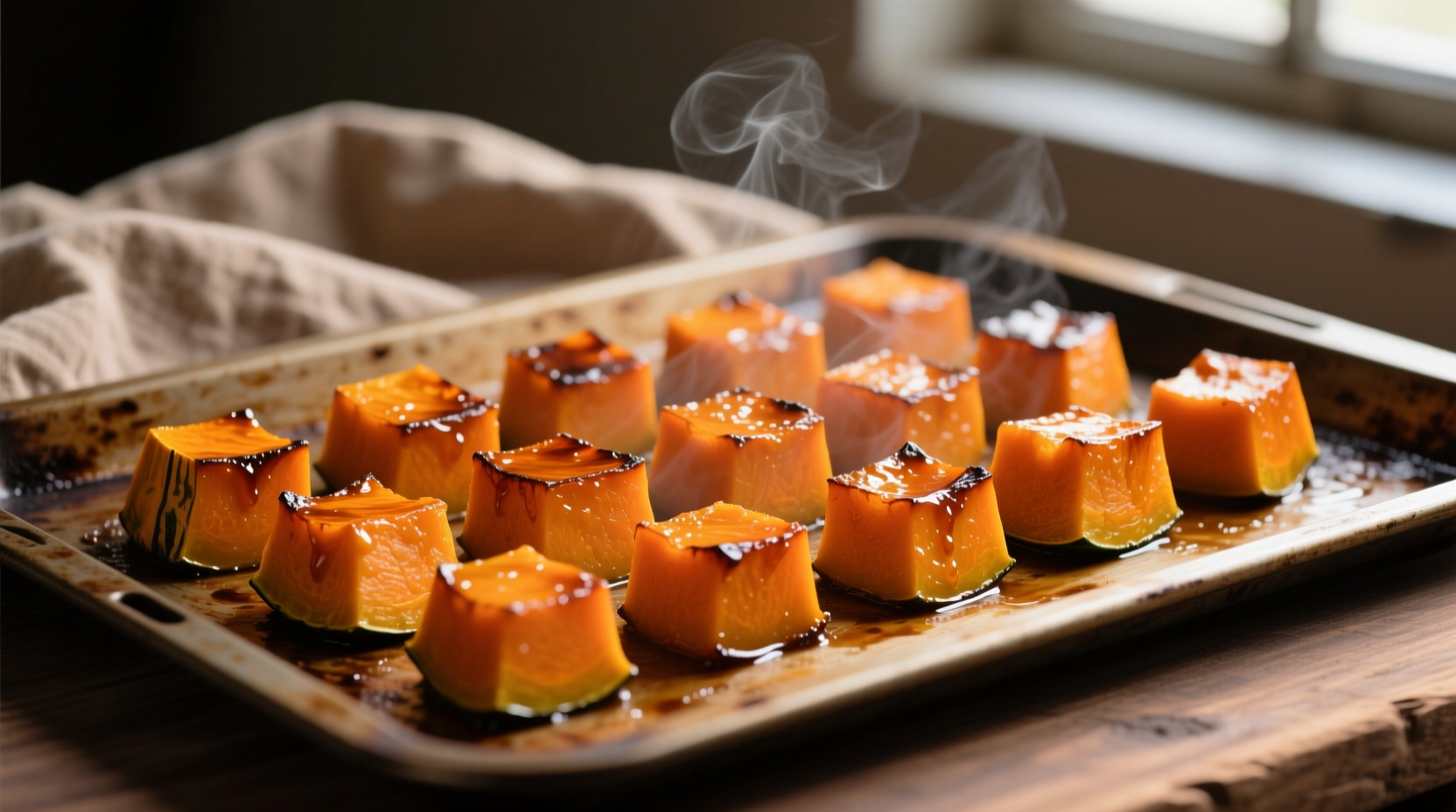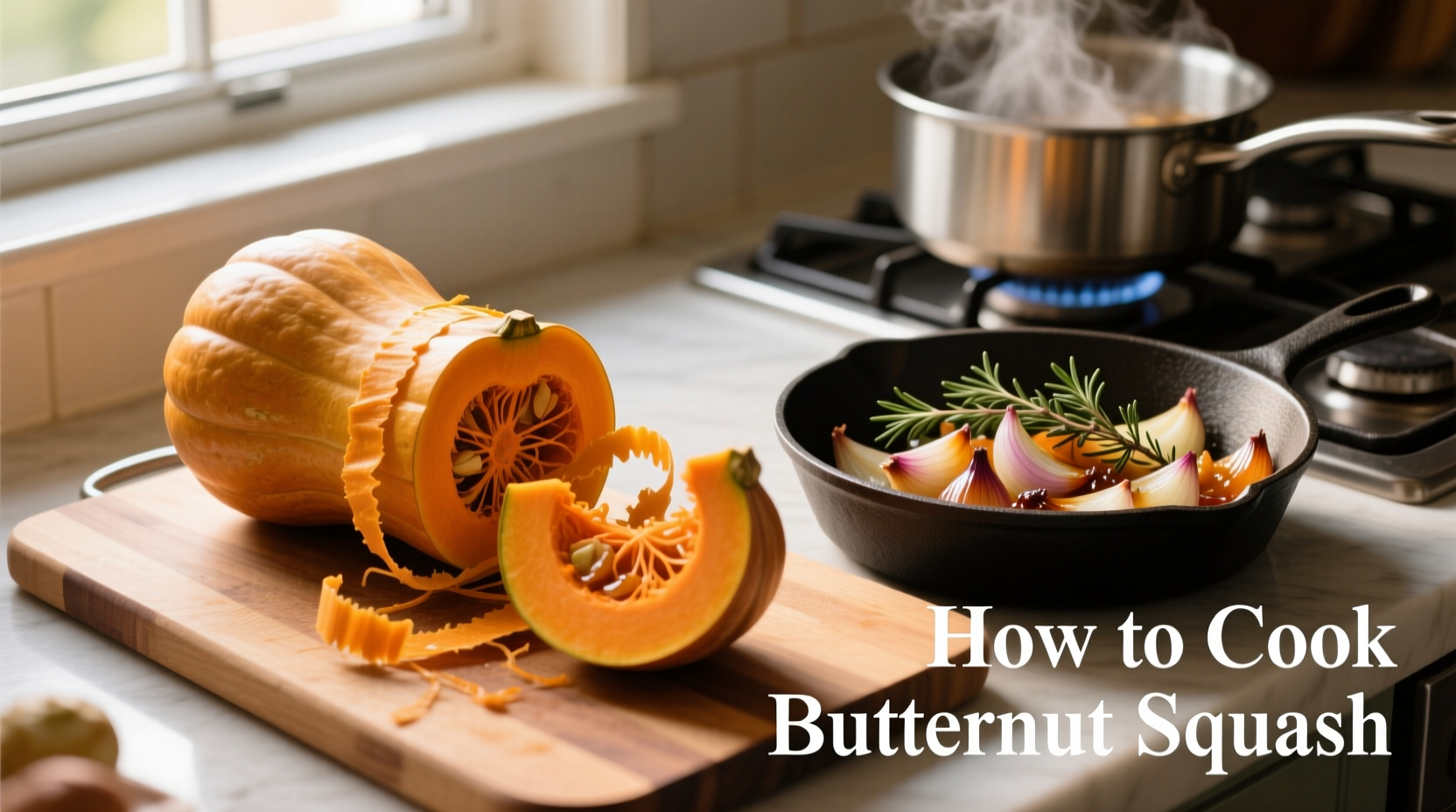Learn how to cook butternut squash perfectly every time with this comprehensive guide. Roast it at 400°F (200°C) for 25-30 minutes, boil cubed pieces for 7-10 minutes, or steam for 10-15 minutes until fork-tender. Properly prepared butternut squash offers a sweet, nutty flavor and creamy texture that works in soups, purees, roasted vegetable dishes, and more.
Master Butternut Squash: Your Complete Cooking Guide
Butternut squash has become a kitchen staple for good reason. This versatile winter squash delivers rich flavor, impressive nutrition, and remarkable culinary flexibility. Whether you're a beginner cook or seasoned chef, understanding how to prepare butternut squash properly unlocks countless delicious possibilities for your meals.
Why Butternut Squash Deserves a Place in Your Kitchen
Before we dive into preparation methods, let's understand why this humble squash deserves attention. Butternut squash ranks among the most nutrient-dense vegetables available. According to the USDA FoodData Central database, one cup of cooked butternut squash provides:
| Nutrient | Amount per Cup | Daily Value % |
|---|---|---|
| Vitamin A | 14,882 IU | 297% |
| Vitamin C | 31 mg | 52% |
| Potassium | 582 mg | 17% |
| Fiber | 6.6 g | 26% |
This nutritional powerhouse supports eye health, immune function, and digestive wellness. Its naturally sweet flavor makes it appealing to both adults and children, while its creamy texture works beautifully in both savory and sweet applications.
Safe Preparation: Cutting and Peeling Your Butternut Squash
Many home cooks avoid butternut squash because they find it challenging to prepare. Follow this safe, step-by-step method:
- Stabilize the squash: Cut a thin slice from the stem and blossom ends to create flat surfaces
- Divide the squash: Cut horizontally where the neck meets the bulb
- Peel the neck: Use a vegetable peeler on the cylindrical neck portion
- Scoop the seeds: Cut the bulb in half vertically and scrape out seeds with a spoon
- Cube the flesh: Slice the neck into rounds, then cut rounds into cubes
For safety, always use a sharp chef's knife on a stable cutting board. If the squash feels too hard to cut, microwave it for 2-3 minutes to soften slightly before cutting. Never attempt to peel butternut squash with a paring knife—a sturdy vegetable peeler works best.

Four Foolproof Cooking Methods Compared
Different cooking techniques yield distinct textures and flavors. Choose the method that best suits your recipe needs:
| Cooking Method | Time Required | Best For | Texture Result |
|---|---|---|---|
| Roasting | 25-35 minutes at 400°F | Soups, purees, side dishes | Caramelized edges, creamy interior |
| Boiling | 7-10 minutes | Quick purees, baby food | Uniformly soft, slightly waterlogged |
| Steaming | 10-15 minutes | Preserving nutrients, salads | Firm yet tender, vibrant color |
| Slow Cooking | 4-6 hours on low | Stews, curries, hands-off cooking | Melts into dishes, rich flavor infusion |
Perfect Roasting Technique (Our Recommended Method)
Roasting brings out butternut squash's natural sweetness through caramelization. Here's how to achieve restaurant-quality results:
- Toss 2 cups of cubed squash (1-inch pieces) with 1 tablespoon olive oil
- Add 1/4 teaspoon each of salt and your chosen spices
- Spread in a single layer on a parchment-lined baking sheet
- Roast at 400°F (200°C) for 25-30 minutes, flipping halfway
- Test for doneness with a fork—should pierce easily
Pro tip: For deeper flavor, add aromatics like rosemary sprigs or garlic cloves to the baking sheet. Avoid overcrowding the pan, as this causes steaming rather than roasting.
Flavor Pairings That Elevate Butternut Squash
Butternut squash plays well with diverse flavor profiles. Consider these pairings based on your meal context:
Savory Combinations
- Sage + browned butter + toasted pecans
- Garlic + thyme + black pepper
- Cumin + smoked paprika + chili flakes
- Coconut milk + curry spices + lime
Sweet Applications
- Cinnamon + nutmeg + maple syrup
- Ginger + cardamom + orange zest
- Allspice + cloves + brown sugar
- Tahini + date syrup + sea salt
For best results, add dried spices before cooking to allow flavors to penetrate, and fresh herbs during the last 5 minutes of cooking to preserve their brightness.
Five Practical Butternut Squash Recipes to Try
Transform your perfectly cooked squash into these delicious dishes:
1. Simple Butternut Squash Soup
Blend 4 cups roasted squash with 2 cups vegetable broth, 1/2 cup coconut milk, and 1 tablespoon fresh ginger. Simmer 10 minutes and season to taste. Garnish with toasted pumpkin seeds.
2. Maple-Roasted Squash Salad
Toss roasted cubes with mixed greens, crumbled goat cheese, walnuts, and a maple-Dijon vinaigrette. Add sliced apples for seasonal variation.
3. Butternut Squash Risotto
Stir 1 cup roasted, pureed squash into your risotto during the last 5 minutes of cooking. Finish with Parmesan and fresh sage.
4. Healthy Squash Breakfast Bowl
Mix cooked squash with Greek yogurt, chia seeds, sliced banana, and a drizzle of almond butter for a nutrient-packed morning meal.
5. Savory Squash & Black Bean Tacos
Combine roasted cubes with black beans, corn, and chipotle seasoning. Serve in warm tortillas with avocado and cilantro.
Storage Guidelines for Maximum Freshness
Proper storage extends butternut squash's shelf life significantly:
- Whole squash: Store in a cool, dark place (50-55°F) for 2-3 months
- Cut raw squash: Refrigerate in airtight container for 3-4 days
- Cooked squash: Keeps in refrigerator for 4-5 days
- Freezing: Puree cooked squash and freeze in portions for up to 12 months
When selecting squash at the store, choose specimens with dull, not shiny, skin and avoid any with soft spots or cracks. Heavier squash typically indicates better moisture content and flavor.
Common Mistakes to Avoid When Cooking Butternut Squash
Even experienced cooks sometimes make these errors:
- Underseasoning: Squash needs generous seasoning—don't be shy with salt
- Overcrowding the pan: Leads to steaming rather than roasting
- Peeling before cooking: Makes handling difficult and wastes edible skin
- Skipping the resting time: Let roasted squash sit 5 minutes before serving for better texture
- Using low-quality oil: Extra virgin olive oil burns at high temperatures—use avocado or grapeseed oil for roasting
Seasonal Availability and Selection Tips
Butternut squash reaches peak season from September through January, though modern storage techniques make it available year-round. During peak season, you'll find the sweetest, most flavorful squash at farmers' markets and grocery stores.
When selecting squash, look for:
- A uniform beige color without green streaks
- A hard rind that resists fingernail pressure
- A solid weight relative to size
- An intact stem (avoid those with broken stems)
According to the University of California Agriculture and Natural Resources, properly stored winter squash maintains quality for several months, making it an excellent choice for meal planning throughout the cooler months.
Final Tips for Butternut Squash Success
Mastering butternut squash preparation opens doors to countless delicious, nutritious meals. Remember these key takeaways:
- Roasting develops the best flavor profile for most applications
- Uniform cube size ensures even cooking
- Don't waste the seeds—roast them like pumpkin seeds
- Combine with protein sources for balanced meals
- Experiment with both sweet and savory applications
With these techniques in your culinary toolkit, you'll transform this humble winter squash into restaurant-quality dishes that impress family and guests alike. The natural sweetness and creamy texture make butternut squash a versatile ingredient that adapts beautifully to countless recipes and dietary preferences.











 浙公网安备
33010002000092号
浙公网安备
33010002000092号 浙B2-20120091-4
浙B2-20120091-4